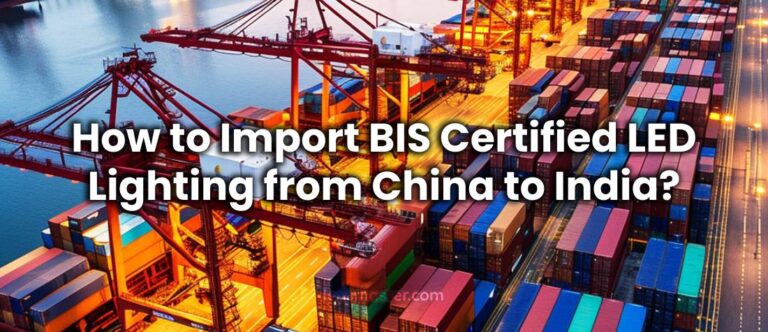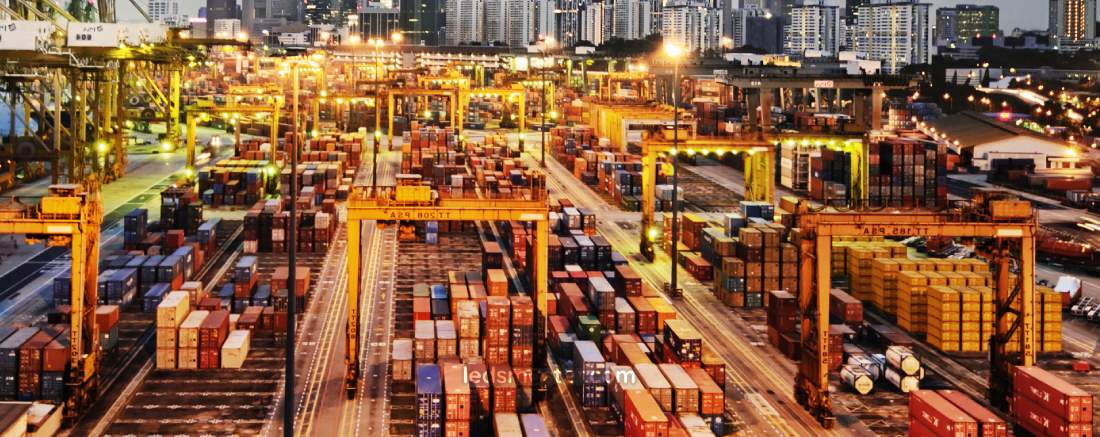
Embarking on the journey of importing LED lighting opens the door to a world of innovation and opportunity. As you navigate the complex terrain of international trade, understanding the intricacies of tax and customs regulations becomes your compass, guiding you through the process with confidence.
Get your complimentary lighting design today
The import of LED lighting from different countries can be a lucrative venture, offering access to a diverse range of products and innovative technologies. However, it involves navigating various complexities such as taxes, customs regulations, and supplier evaluation. We will provide a detailed overview of key considerations for successfully importing LED lighting, including practical tips on finding reliable suppliers and assessing the quality of products.
Table of Contents
ToggleWhen importing LED lighting, it is crucial to understand the tax and customs regulations of both the exporting and importing countries. This knowledge is essential to managing costs effectively and ensuring a smooth import process.
Import Duties and Taxes
Import duties and taxes can significantly impact the total cost of importing LED lighting. These costs vary depending on the country of import and the specific type of lighting equipment. For instance, many countries impose a Value-Added Tax (VAT) on imported goods, which is a consumption tax that can differ greatly from one country to another. In Europe, VAT rates tend to be higher compared to North America, potentially affecting the overall expense of your import.
In addition to VAT, import duties are another critical cost component. These duties are imposed based on the value of the goods, their classification under the Harmonized System (HS) code, and the country of origin. The rate of these duties can vary, so it’s important to know how the LED lighting will be classified to understand the exact costs.
Some countries also levy additional charges such as environmental fees or special tariffs, which can further impact the total cost. Understanding these various levies and how they apply to LED lighting is key to budgeting accurately for your import.
To ensure precise calculations of taxes and duties, consulting with customs authorities or a customs broker is recommended. They can provide detailed information on tariff codes, which classify LED lighting under specific categories, and inform you of any preferential trade agreements that might be available.

Tariff Codes and Trade Agreements
Tariff codes play a crucial role in determining the duties applicable to your LED lighting imports. These codes are part of a standardized system used internationally to classify products for customs purposes. Accurate classification under the correct tariff code can significantly influence the duty rate and help ensure compliance with international trade regulations.
Furthermore, preferential trade agreements between countries or regions may offer reduced rates or exemptions on certain imports. By checking if such agreements apply to your LED lighting imports, you could benefit from cost reductions.
Documentation Requirements
Navigating customs procedures involves several critical steps and requires meticulous attention to documentation. Essential documents for importing LED lighting typically include import declarations, bills of lading, and certificates of origin.
Import declarations are forms that provide detailed information about the imported goods, including their value, quantity, and classification. Completing these forms accurately is crucial to avoiding delays and ensuring that your import complies with local regulations.
Bills of lading act as a receipt for the shipment of goods and include important details about the delivery, such as the consignor, consignee, and the terms of shipment. This document is essential for clearing goods through customs and should be carefully reviewed to ensure accuracy.
Certificates of origin are documents that verify the country where the goods were manufactured. This certificate can influence the applicable duties and compliance with trade agreements. Ensuring that all these documents are accurate and complete can help prevent delays and additional costs associated with the import process.
To manage these requirements effectively, customs brokers can be valuable partners. They offer expertise in handling documentation and ensuring compliance with customs regulations, helping to streamline the import process and mitigate potential issues.

Selecting a dependable LED lighting supplier is crucial for ensuring the quality and consistency of your lighting products. Here are some steps to guide you through the process of finding a reliable and capable partner.
To start, comprehensive research is essential to identify potential suppliers. Utilize online directories such as Alibaba, Global Sources, and ThomasNet, which offer extensive lists of suppliers along with reviews and ratings. These platforms can provide an overview of available options and help you gauge the reputation of different suppliers.
Attending trade shows is another valuable method for discovering potential suppliers. Trade shows provide the opportunity to meet suppliers in person, allowing you to assess their products directly and discuss your requirements face-to-face. This direct interaction can also give you a sense of the supplier’s professionalism and product quality.
Industry associations are also a useful resource. They often offer recommendations and insights into reputable suppliers within the sector. Leveraging these associations can help you narrow down your options to trusted and well-regarded suppliers.
Once you have a shortlist of potential suppliers, it’s important to evaluate their credentials to ensure their reliability. Begin by examining their business history, including how long they have been in operation and their track record in the industry.
Certifications are a key indicator of a supplier’s commitment to quality and standards. Look for suppliers that hold relevant certifications such as ISO 9001 for quality management and ISO 14001 for environmental management. These certifications signify that the supplier adheres to international standards and best practices in their operations.
Assess the supplier’s manufacturing capabilities. A supplier with advanced production facilities and technologies is more likely to deliver high-quality products consistently. Reviewing their production processes and quality control measures can provide further insight into their reliability.
Evaluating the quality of LED lighting products is a critical step in selecting a supplier. Request samples from potential suppliers and conduct thorough testing to assess their performance and durability. Key factors to examine include light output, color temperature, energy efficiency, and lifespan.
Testing the samples will help you determine if they meet your technical specifications and quality standards. Besides, review the product warranties and after-sales support offered by the supplier. A supplier that stands behind their products with comprehensive warranties and responsive support demonstrates confidence in their quality and a commitment to customer satisfaction.
It is essential to distinguish between reputable and unreliable suppliers to ensure successful transactions. Several red flags can indicate potential issues:
Price Discrepancies
Be cautious of suppliers offering prices significantly lower than the market average. Such pricing may suggest compromised quality or hidden costs that could impact your overall satisfaction with the products.
Lack of Transparency
Suppliers that are not transparent about their pricing, production processes, or company information may be problematic. Transparency is crucial for building trust and ensuring that you have a clear understanding of what you are purchasing.
Poor Communication
Unresponsive communication, poor customer service, and reluctance to provide references or documentation are additional warning signs. Effective communication and customer service are essential for a smooth partnership and resolving any issues that may arise.
Establishing a strong relationship with your chosen supplier is vital for ensuring smooth transactions and ongoing support. Communicate your requirements and expectations clearly from the outset, including any specific standards or certifications you need the supplier to meet.
Regularly review the supplier’s performance and address any issues promptly to maintain a positive working relationship. Building a solid partnership can facilitate better cooperation, more reliable service, and a more successful long-term collaboration.
Ensuring compliance with both international and local standards is crucial when importing LED lighting. Adhering to these regulations helps guarantee product safety, performance, and successful market entry.
LED lighting products must conform to international standards to ensure they meet globally recognized benchmarks for safety, performance, and environmental impact. The International Electrotechnical Commission (IEC) and the American National Standards Institute (ANSI) set these standards.
The IEC provides guidelines on electrical safety, electromagnetic compatibility, and performance for lighting products. Compliance with IEC standards, such as IEC 60598 for luminaries, ensures that the LED lighting products are safe for use and function reliably under various conditions.
ANSI standards also play a critical role, particularly in the United States, by specifying performance criteria and safety requirements. Products that meet ANSI standards are often marked with certification symbols, which help verify compliance.
When importing LED lighting, check for certifications or markings that indicate adherence to these international standards. This verification helps ensure that the products are safe, efficient, and of high quality.
In addition to international standards, LED lighting products must comply with local regulations in the importing country. These regulations can include energy efficiency requirements, safety standards, and specific labeling rules.
Many countries have regulations aimed at enhancing energy efficiency and reducing environmental impact. For example, regulations may mandate that LED lighting products meet certain energy efficiency criteria or bear energy performance labels.
Safety standards are also crucial and can vary by country. They may address electrical safety, fire hazards, and other potential risks associated with lighting products.
Labeling regulations often require that products display specific information, such as energy consumption, manufacturer details, and compliance marks. Ensure that your LED lighting products meet these local requirements to avoid legal issues and facilitate a smooth entry into the market.
Efficient logistics and shipping management are essential for timely delivery and cost control when importing LED lighting.
Selecting the appropriate shipping method is vital based on your needs, budget, and the nature of the shipment. The primary shipping methods include air freight, sea freight, and courier services.
Air freight is the fastest option and ideal for urgent or high-value shipments, but it is more expensive compared to other methods. Sea freight, while slower, is a cost-effective choice for larger shipments and is often used for bulk orders. Courier services are suitable for smaller or time-sensitive shipments and offer tracking and door-to-door delivery.
Consider factors such as delivery time, cost, and the nature of the LED lighting products when choosing the shipping method. Each method has its advantages and trade-offs, so selecting the most appropriate one can impact overall efficiency and cost.
Proper handling and packaging are crucial to prevent damage to LED lighting products during transit. Ensure that the supplier uses appropriate packaging materials and methods to safeguard the products from physical damage, moisture, and temperature fluctuations.
Packaging should be robust enough to withstand the rigors of transportation and include adequate cushioning to protect delicate components. Check if there are any specific handling and packaging requirements in both the exporting and importing countries to ensure compliance and prevent issues during shipping.
Tracking shipments is essential for monitoring progress and managing any issues that may arise during transit. Utilize tracking tools provided by shipping carriers to stay informed about the status of your shipment and address any potential delays or problems promptly.
Consider purchasing insurance to cover potential losses or damages that may occur during shipping. Insurance provides financial protection and peace of mind, especially for valuable or high-risk shipments. By managing logistics and shipping efficiently, you can help ensure timely delivery and minimize potential disruptions.
Importing LED lighting from different countries involves navigating a complex landscape of tax and customs regulations, supplier evaluation, and compliance with standards. By understanding these key aspects and following best practices, you can successfully import high-quality LED lighting products while minimizing risks and ensuring cost-effectiveness. Building strong relationships with reliable suppliers and staying informed about international and local regulations will contribute to a smooth and successful import process.